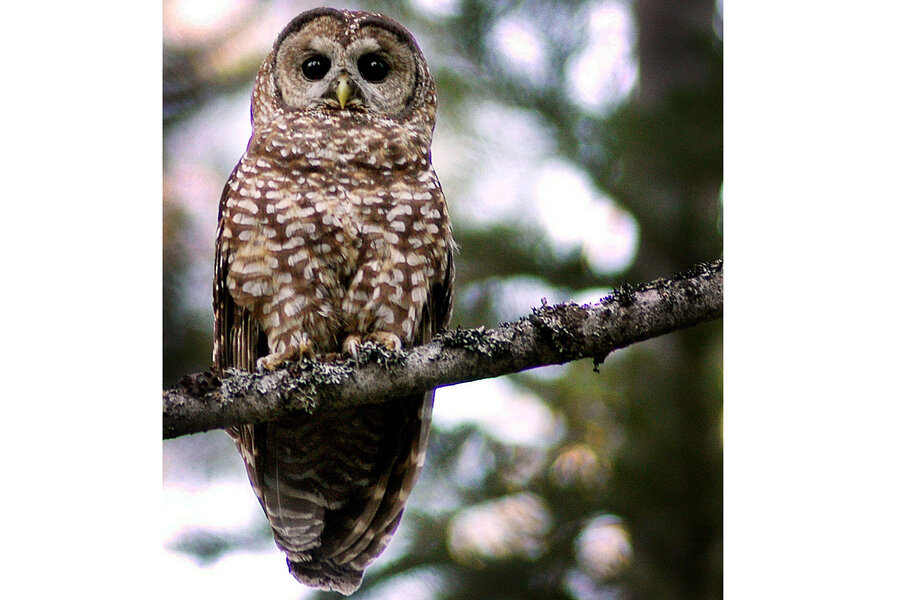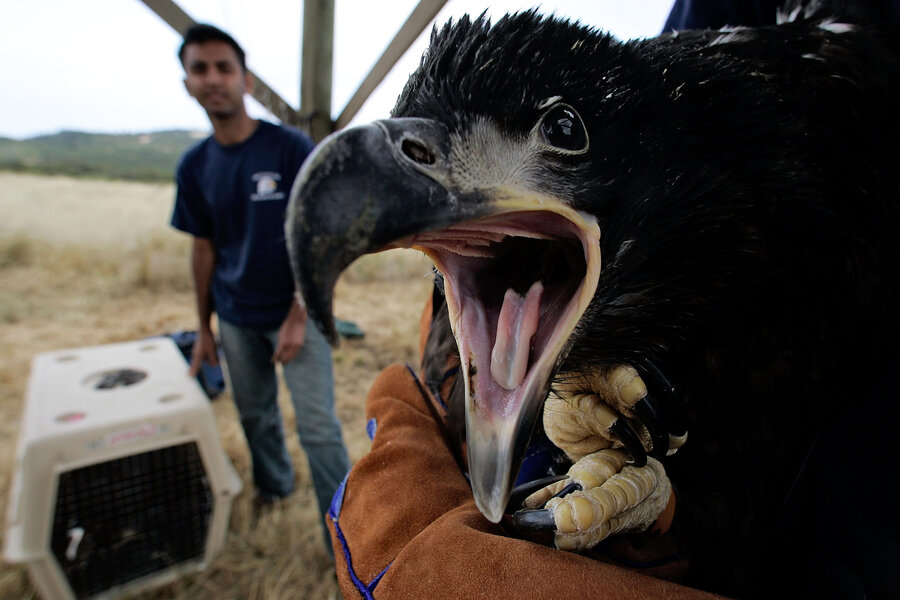Can we save the California Spotted Owl?
Loading...
Bird-watchers reveled in four bald eagle sightings during a weekend event in San Bernardino county, California, the Associated Press reported.
For wildlife advocates, such sightings are a satisfying reminder that efforts to pull a species back from the brink of extinction can work. After a major comeback from a population of a few hundred in the 1950s, the bald eagle is not only a poster child for the Endangered Species Act, but also a model for progress within it.
The bald eagle had declined precipitously both because of direct human intervention and the pesticide DDT that weakened eagle eggshells. Bald eagles received a spot on the Endangered Species Act list, nationwide concern, and decades of work, and they became ubiquitous once more. They returned to California to the delight of bird-watchers and conservationists.
“This news is very gratifying,” Peter Sharpe, an ecologist working for eagle restoration with the Institute for Wildlife Studies, said in a news release. “I expect to see bald eagles return to all eight of the [California] Channel Islands within a few years, which will mark yet another milestone in their successful recovery."
Threats to the all-American bird involved DDT, rather than habitat reduction, but Justin Augustine of the Center for Biological Diversity says another native bird species, the California Spotted Owl, could benefit from the focused effort the Endangered Species Act provides.
"There’s a difference in terms of the threats, so it wouldn’t necessarily follow exactly the same blueprint of recovery as the bald eagle, but that’s exactly the point of the Endangered Species Act," Mr. Augustine says in a phone interview.
The number of California Spotted Owls has been declining in its habitat in the Sierra Nevada Mountains, and it competes with an invasive barred owl species. The California Spotted Owl has some legal protection currently that prevents logging in the Sierra Nevada conifer forests during its nesting months, but Augustine says the difference between owl populations in national park land (where logging is not permitted) and national forests or private lands (where clear-cutting sometimes occurs) is striking.
The bald eagle's path to recovery also had advantages the owl may not find, and no species receives the "endangered" designation lightly. The Center for Biological Diversity filed an intent to sue on Monday because the US Fish and Wildlife Service had exceeded the 12-month time limit for deciding whether the California Spotted Owl is endangered. The notice puts pressure on the government agency to review the case, but formal designation and protection are still a year out after that, Augustine says.
The owl is entering a crowded playing field for conservation, and the Fish and Wildlife Service could choose to designate the owl "warranted but precluded." This would mean that while the owl's situation deserves protection, it falls behind too many other species in need to receive any more of the government's limited resources.
Some groups would also oppose designating another owl endangered, as the species' cousin, the Northern Spotted Owl, already holds a controversial listing on the Endangered Species Act. Protection for the spotted owl caused losses to the timber industry that crippled the economy in parts of California and left some residents feeling that Ammon Bundy and his anti-federal militia in Oregon are not too far off, according to the Sacramento Bee.
“We either have to quit and go do something else, or we need to fight it,” said Jerry Kresge, a California cattle rancher. He told the Sacramento Bee he disagreed with Bundy's tactics but appreciated the sentiment after the spotted owl controversy. “I think most folks I know are to the point where they’ll fight.”
Although the California Spotted Owl will not "follow exactly the same blueprint of recovery," Augustine says the bald eagle remains an example of how the American conservation process works and holds out hope for the owl.
"It took a while for the bald eagle, but it did eventually happen," Augstine says. "That’s what we would hope for the owl."









